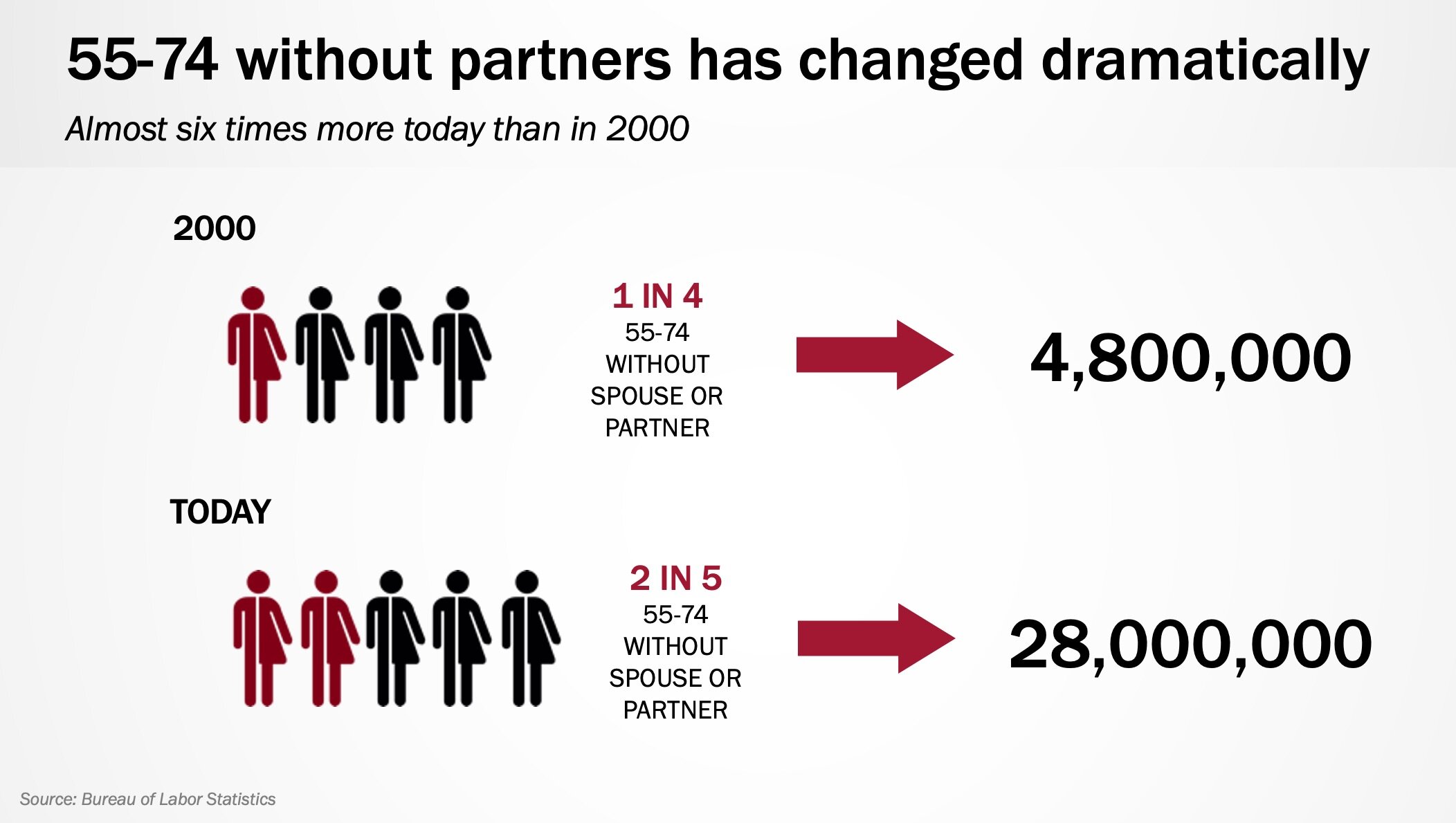this is about wants and Needs
Even before the coronavirus pandemic, the senior housing sector needed to change.
Here’s why: At the start of 2020. the average age of someone moving into an “independent” supported senior community today was 81. People put off moving to “senior” living as long as possible. Why? Clearly, it’s because most older adults view senior housing as a “need” not a “want.” Study after study confirms that people want to stay in their homes rather than move into a community with services for seniors.
Then COVID-19 hit, and even if they need senior housing, they don’t want it as currently configured.
Almost daily there are stories about changing preferences and the need to change the approach:
This Senior Living Business Model Doesn’t Involve Real Estate — August 18, 2021
Future of Nonprofit Senior Living Demands New Approaches to Staffing, Hospitality, Services — August 3, 2021
Hey Senior Living Pros: Boomers Don’t Want Your Old, Tired Communities — May 11, 2021
While begun before COVID-19, Cozy Home Community addresses this new reality.
senior living operator?
Download our White Paper on how a Cozy Home Community can help nonprofit, faith-based, mission-drive senior living providers fulfill their mission.
Consumers are driving this change
Older adults today are benefiting from the longevity revolution driven by medical and pharmaceutical advances over the last several decades. In the past, chronic health conditions brought on by aging could only be managed in a healthcare-like setting. Hence, the need for supported senior housing and assisted living communities. Modern medicine has changed that and people are now able, and want, to stay in their homes longer.
The Boomer generation, born between 1946 and 1964, are ages 56 to 74 in 2020. Some 70 million strong, they are experiencing a new stage of life now: finished with raising kids and working and still years away from reaching full elderhood. For the wealthy few, it’s a time of travel and new experiences. Some even placing deposits on Life Plan Communities for when they reach their 80s and need to move to supported housing. For the poor and unhealthy, it’s already a time of dependence on others — family and social services.
But what about the massive group in the middle? What about the millions of older adults who don’t have the resources to afford travel and the high costs of senior housing, and have too much to qualify for public assistance programs? Where will they live?
That’s why we created Cozy Home Community™.
WHAT IS THE SIZE OF THIS MIDDLE MARKET?
More than half of Boomers (about 38 million) have less than $100,000 saved for retirement. In a recent national survey conducted by SIR’s Institute for Tomorrow, 9 of 10 admit they haven’t saved enough. When asked their plans, they say they’ll just keep working, or rely on Social Security, Medicare, and the equity in their home by tapping into it, getting a reverse mortgage or selling. None of those options are sustainable.
If they do sell their home, the current solution is to move to condos or apartments where “community” living (looking out for each other) may or may not exist, and no services are provided as they grow older.
The National Investment Center has concluded that some 8 million middle-income older adults will need to live in some type of supported senior housing by 2029 and will either have too much income to qualify for HUD housing or not have the funds needed for senior living options available today.
This “forgotten middle” is the target for Cozy Home Communities.
NO PARTNERS, NO KIDS, NO CAREGIVERS.
Two in five people ages 55-74 do not have a partner. Back in 2000, only one in four were without a partner.
That means one less income now, one less Social Security check later, and one less caregiver in the home. Of the Boomers who had children, they had, on average, two. The prior generation had four (hey, it’s called the “Baby Boom” for a reason!).
But not having a partner or kids to provide care if needed means that tens of millions of older adults are on their own.
One option some older adults are pursuing is to form “families of convenience,” like TV’s Golden Girls, living together to help each other. Cozy Home Colonies provide an easy way for friends and peers to come together and support each other.
FEW REASONABLY-PRICED HOUSING OPTIONS EXIST.
The median sales price of new single-family homes sold in 2016 was $302,400, while the average sales price was $362,400. The median size of a new single-family home sold was 2,602 square feet. That’s not affordable for middle income older adults on a fixed income.
Their solution? Stay in their home, often alone and isolated. Not an ideal way to live during your pre-senior years (see sidebar).
Traditional manufactured and some modular homes can be acquired for less than $100,000 but are generally seen by most home buyers as unappealing options. That mindset is shifting as new entrants into manufactured and modular home building are creating desirable homes for middle-income consumers of all ages.
Take a look at the amazing modular, prefab homes our partner, Deltec Homes, has created.
From the National Institute on Aging:
Health effects of social isolation, loneliness
Research has linked social isolation and loneliness to higher risks for a variety of physical and mental conditions: high blood pressure, heart disease, obesity, a weakened immune system, anxiety, depression, cognitive decline, Alzheimer’s disease, and even death.
People who find themselves unexpectedly alone due to the death of a spouse or partner, separation from friends or family, retirement, loss of mobility, and lack of transportation are at particular risk.
Conversely, people who engage in meaningful, productive activities with others tend to live longer, boost their mood, and have a sense of purpose. These activities seem to help maintain their well-being and may improve their cognitive function, studies show.




